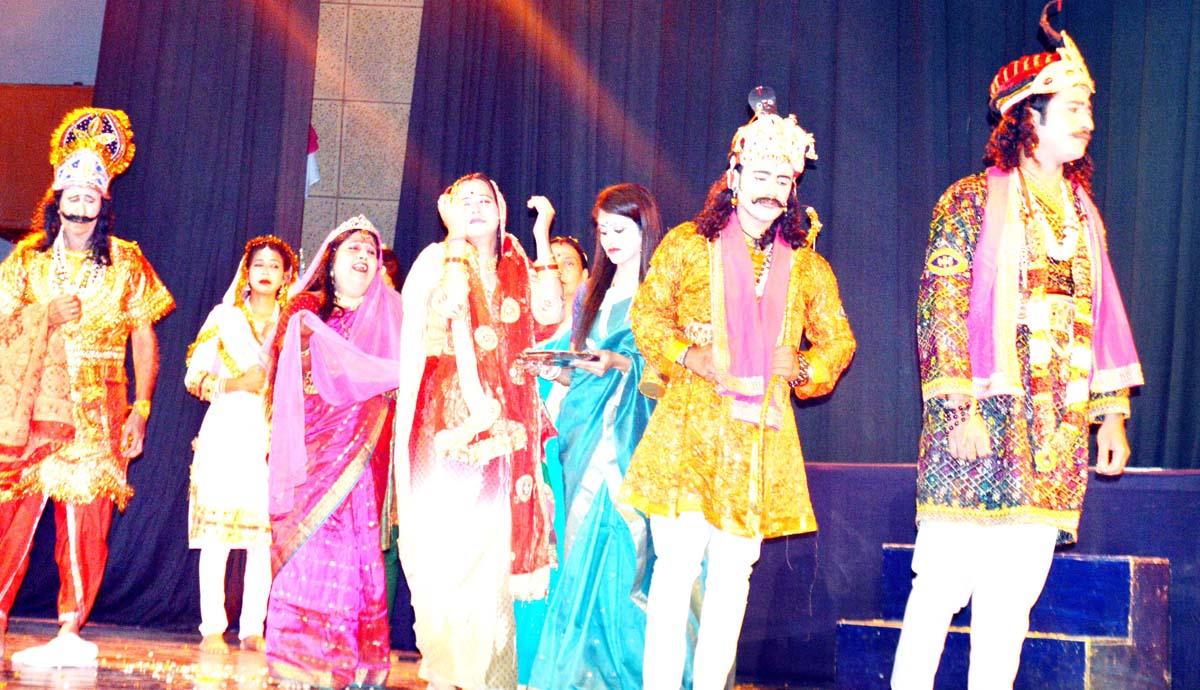

The Britishers couldn‘t have much influence on religion and culture of Punjab, therefore the influence of English on Punjabi was limited only to the official and administrative communication.
The result was a deep impact of Arabic and Persian on Punjabi. Therefore as the Muslims were ruling at that time, the influence of their language on administrative usage was very strong and at the same time due to conversion of rural Hindus into Islam, the influence could be seen in rural India also. The Muslims invaded India and they converted many Hindus to Islam and thus the Muslim culture penetrated Punjabi villages also. These languages have not only given so many of the new words to Punjabi but have also given many words for administration, religion and routine usages for which Punjabi already had its own vocabulary. Persian and English remained as official languages also and influenced the Punjabi language. As the history tells, Punjab had been the victim of great historical turmoil, the people of Punjab had been greatly affected by Arabic, Persian and English languages. No doubt Punjabi is greatly influenced by Sanskrit, it is influenced by many other languages also. For instance nain (eye) in Punjabi and Nayan in Sanskrit, sir (head) in Punjabi for shir, dant (teeth) for dand, ungali (finger) for anguli. Pritam Singh has done an excellent comparison of words used for the body. ―Dr Mohan Singh, a famous Punjabi writer has enlisted some five hundred Sanskrit origin words in Punjabi. It has been accepted that Punjabi like all other Indian languages, comes out of Sanskrit. Today‘s Punjabi is an altered version of old Punjabi. The inner social conditions and outer influences encourage the development of vocabulary and grammar of a language. Language in a way is inherited from generations to generations and keeps on enriching itself with the changing cultural influences. Theatre in India has encompassed all the other forms of literature and fine arts into its physical presentation: literature, mime, music, dance, movement, painting, sculpture and architecture – all mixed into one and being called ‘Natya’ or Theatre in English. Natyadharmi (conventional), which is the presentation of a play through the use of stylized gestures and symbolism and was considered more artistic than realistic. Lokadharmi (realistic), which involved the reproduction of human behaviour on the stage and the natural presentation of objects. Hindu theorists from the earliest days conceived of plays in terms of two types of production:. It is addressed to the playwright, the director, and the actor because to Bharata Muni these three were inseparable in the creation of a drama. No book of ancient times in the world contains such an exhaustive study on dramaturgy as Natya Shastra. In Natya Shastra, Bharata Muni consolidated and codified various traditions in dance, mime and drama. The origin of Indian theatre is closely related to ancient rituals and seasonal festivities of the country. India has a longest and richest tradition in theatre going back to at least 5000 years. Bharata’s Natya Shastra was the earliest and most elaborate treatise on dramaturgy written anywhere in the world. Visual arts – including drawing, painting, photography, ceramics, sculpting, and architecture – the art of designing and constructing buildings. Performing arts – among them music, dance, and theatre and. Literature – including poetry, novels and short stories, and epic poetry. The art refers to the theory and physical expression of creativity found in human societies and cultures from Ancient Time in India. 
This art of embroidery was given great importance in Punjab which is clear from what Guru Nanak Dev ji (1469-1538 A.D) the founder of the Sikh religion, said in the holy book Guru Granth Sahib.Phulkari is the famous textile art of Punjab which is primarily made by Punjabi women for their personal use. The elder members of the family influenced this training in a friendly environment.In the past, the women of Punjab were illiterate, but all of them were well trained in the household arts such as knitting, sewing, spinning and dying, weaving, cooking, and embroidering.The women of Punjab are not only strong and well built, but they also have a simple heart and a creative imagination that enables them to make original and outstanding arts.

Punjab has a rich culture and heritage.







 0 kommentar(er)
0 kommentar(er)
